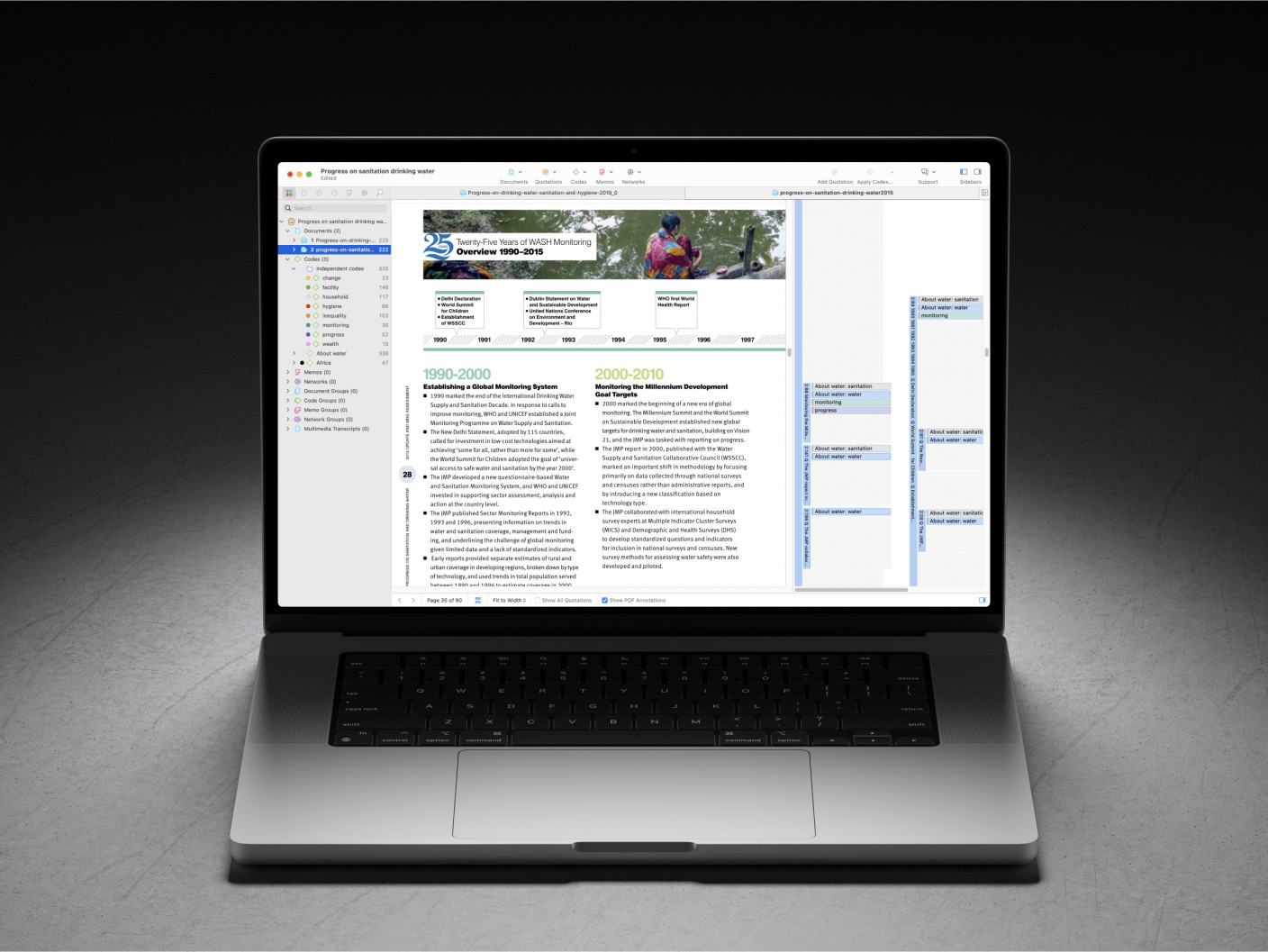- What is Mixed Methods Research?
- Advantages of Mixed Methods Research
- Challenges in Mixed Methods Research
- Common Mistakes in Mixed Methods Research
- Mixed Methods Research Paradigms
- Validity & Reliability in Mixed Methods Research
- Ethical Considerations in Mixed Methods Research
- Mixed Methods vs. Multiple Methods Research
- Mixed Methods Research Designs
- How to Choose the Right Mixed Methods Design
- Convergent Parallel Design
- Explanatory Sequential Design
- Exploratory Sequential Design
- Embedded Mixed Methods Research Design
- Transformative Mixed Methods Design
- Multiphase Mixed Methods Research Design
- How to Conduct Mixed Methods Research
- Sampling Strategies in Mixed Methods Research
- Data Collection in Mixed Methods Research
- Triangulation in Mixed Methods Research
- Data Analysis in Mixed Methods Research
- How to Integrate Quantitative & Qualitative Data?
- How to Interpret Mixed Methods Research Findings?
- Software Tools for Mixed Methods Data Analysis
- How to Write a Mixed Methods Research Proposal
- How to Write a Mixed Methods Research Paper?
- Reporting Results in Mixed Methods Research
- Mixed Methods Research Examples
- How to cite "The Guide to Mixed Methods Research"
How to Write a Mixed Methods Research Paper?
Writing a mixed methods research paper can be challenging, but with careful organization and planning, researchers can successfully present their findings and potentially publish them in a journal. This article outlines qualitative expert John Creswell's (2013) fundamentals for crafting a mixed methods research paper, key factors to consider, and practical tips to maximize the research writing process.

Introduction
A well-crafted research paper begins with an introduction, typically spanning one to one-and-a-half pages and structured into five essential components. These include establishing the topic, identifying the research problem, reviewing existing literature, highlighting gaps in knowledge, and explaining the study's relevance to its audience.
The introduction is followed by an articulated purpose statement that defines the primary aim of the study. Next, the research questions are outlined, reflecting the study's design. These encompass quantitative questions or hypotheses, qualitative questions focused on exploring phenomena, and mixed methods questions that integrate both approaches to address broader research objectives.
Finally, the results and discussion sections must be structured to reflect the applied mixed methods design, seamlessly integrating quantitative and qualitative findings to provide a comprehensive analysis.
According to Creswell, one of the most critical aspects of writing a mixed methods research paper is ensuring that the presentation of information aligns with the chosen design. The structure of the methods, results, and discussion sections should reflect the specific design applied, creating a cohesive "mirror" of the research approach. For example, in a convergent parallel design, the results section should first present quantitative and qualitative findings separately, followed by an integrated results section using a joint display. The discussion section would then summarize these findings and provide a side-by-side or integrated analysis, reinforcing the interplay between both methods.
Kinds of mixed methods research papers
According to Creswell, mixed methods research papers can be categorized into three distinct types:
- The first type concentrates solely on the methodology, offering an in-depth exploration of the principles and procedures underlying a mixed-methods research design. This type is valuable for readers seeking to understand the technical framework and rationale behind the approach.
- The second type blends methodological discussion with an educational overview, where the researcher provides both a detailed explanation of the chosen mixed methods design and a broader introduction to mixed methods research as a concept. This approach serves to both inform the reader about the methodology and educate them on its foundational principles.
- The third type is an entirely empirical research paper that implements a mixed methods design in practice. Such papers focus on applying the design to investigate specific research questions, integrating quantitative and qualitative data to produce actionable insights.
Factors to consider when writing a mixed methods research paper
Overall, researchers must consider 4 factors when writing a mixed methods research paper.
- Selecting an appropriate journal: Identifying a journal that publishes mixed methods research is crucial. Researchers should ensure the journal aligns with the study’s scope and methodological approach.
- Types and scope of publications: It is important to consider the different types of mixed methods publications accepted by the journal and determine how many submissions are permissible within the research framework. There are different journals for mixed methods research studies that can be categorized depending on their specific approach. There are journals devoted to mixed methods research, including the Journal of Mixed Methods Research, The International Journal of Multiple Research Approaches, Field Methods (anthropology) and the Quality and Quantity Journal. The second category is those frequently publishing mixed methods research studies, such as the International Journal of Social Research Methodology, Qualitative Inquiry, Qualitative Research and the British Medical Journal. The third category is "friendly" to mixed methods research such as the Annals of Family Medicine, American Educational Research Journal, Circulation and many other social science journals.
- General writing considerations: Attention should be given to common writing issues, including maintaining appropriate word length and effectively educating the audience about the mixed methods design. Some journals require a shorter length while others accept a longer manuscript. While some do accept longer ones, most have limitations. TTo reduce the number of words in a manuscript, it is important to critically verify that each sentence in the paper is succinct while adding something of value. In addition, using tables or figures can help help save space and convey key points.
- Aligning writing structure with mixed methods research design: The writing structure should be meticulously tailored to reflect the specific mixed methods design employed in the study, ensuring coherence and clarity in presenting the research process and findings
How to write an introduction?
The primary goal of an introduction is to capture the reader's interest and encourage them to continue reading. A well-written introduction sparks curiosity while also presenting the problem the research aims to address and outlining the purpose of the study. It may also introduce the research questions.
An effective introduction often follows a layered structure. The first layer provides a general overview, the second explains the research, purpose and the third presents the research questions. This structure, as recommended by Creswell, ensures clarity and engagement.
Creswell further suggests that the best introductions consist of five essential components, each presented in a separate paragraph:
- The topic: Begin with the general subject area that the research addresses. This section is critical, as a poorly defined or overly complex topic can deter readers. Creswell compares this process to gently lowering someone into a well—start broadly and gradually narrow the focus. Use the opening sentences to present the topic in an engaging, general way. Employ a narrative hook, such as compelling statistics, a striking problem, or references to previous discussions on the topic. The goal is to create interest while alerting the reader to the relevance of the issue.
- The problem: Identify the core issue or concern that the research seeks to address. This could be a significant challenge, such as high school dropout rates or low participation in cancer screenings. Clearly articulate why this problem warrants investigation and how it connects to broader societal or academic concerns.
- The existing literature: Summarize what is already known about the problem. Discuss previous research, highlighting key findings and contributions without delving into the specifics of a full literature review. The focus here is to demonstrate that the problem has been recognized and studied but requires further attention.
- Gaps in the literature: Highlight the deficiencies or unresolved issues in the existing body of research. This may include understudied variables, unaddressed populations, or mixed results that require clarification. Emphasize why these gaps are important and how your study, particularly through a mixed methods approach, addresses them. For instance, point out if prior studies relied solely on qualitative or quantitative methods without integrating both.
- The beneficiaries: Conclude by discussing who stands to benefit from the research. This might include policymakers, educators, legislators, administrators, researchers, or community members. Explain the practical or theoretical value of the study and its potential impact on these audiences.
By combining these components, an introduction can effectively set the stage for the research, engage readers, and communicate the study’s significance.
How to write a purpose statement or study aim?
Once the introduction is complete, the next step is to present the purpose statement. This is the most critical element of the entire research report, as it defines the primary aim or objective of the study. A well-crafted purpose statement provides clarity and direction; without it, readers may struggle to follow the research. The purpose statement could comprise its own subsection, or it can be included at the end of the introduction, literature review, and/or beginning of the methodology, depending on the style of the target journal or publication outlet.
When discussing the study’s details, prioritize the content before introducing the method. For example, if you are collecting data on a specific topic, first explain the subject or focus of the data and then mention the method used, such as focus groups, interviews, or quantitative data collection methods. This content-first, method-second approach ensures that the readers understand the significance of the collected information before delving into how it is obtained.
The following is an example of Creswell's script shared in a previous workshop for a purpose statement for convergent parallel design.
This mixed methods research study will address [overall content aim]. A convergent parallel design will be used, and it is a type of design in which qualitative and quantitative data are collected in parallel, analyzed separately and then merged. In this study, [quantitative data] will be used to test the theory of [the theory] that predicts that [independent variables] will [positively, negatively] influence the [dependent variables] for [participants] at [the site]. The [type of qualitative data] will explore [the central phenomenon] for [participants] at [the site]. The reason for collecting both quantitative and qualitative data is to [the mixing reason].
Writing the research questions
In mixed methods research, research questions often include quantitative hypotheses or questions, qualitative questions, and mixed methods questions. These are typically organized in a sequence that aligns with the chosen research design.
Quantitative hypotheses or research questions
The foundation of quantitative research questions or hypotheses involves the following:
- State variables clearly: Identify variables to compare groups, relate variables, or describe trends. These variables are often derived from a theoretical framework.
- Theory-driven questions: Rigorous quantitative research typically tests a theory, and the research questions should reflect this focus on theory validation.
- Focus on hypotheses and/or research questions: Write hypotheses (predictions) that clearly state the expected relationship between your variables of interest. If theory does not clearly predict relationships among variables, research questions can be crafted instead. If appropriate for your mixed methods study, both approaches can be combined.
- Specify variables: Clearly define independent, dependent, mediating, or covariate variables. For example, mediating variables explain the relationship between independent and dependent variables.
- Follow a consistent structure: Maintain a logical order when writing questions, such as listing the independent variable first, followed by the dependent variable and then any covariates.
Qualitative research questions
Qualitative questions are distinct to hypotheses for their exploratory nature. The key elements include:
- Start with a central question: Begin with a clear overarching research question that includes your main theoretical keywords of interest. Then, decide on 3-7 subquestions or objectives. These subquestions break the central question into manageable objectives that, as a whole, construct an answer to the central question.
- Use open-ended words: Begin with words like "how" or "what." Avoid "why," which is more suited to quantitative research.
- Focus on a single phenomenon: It is important that the research question is focused and narrow enough to be sufficiently explored in your study.
- Use exploratory verbs: Employ verbs like "discover," "understand," "explore," "describe," or "report."
- Allow flexibility: Be prepared for the questions to evolve during the research process or as fieldwork progresses.
- Include specifics when necessary: Questions may identify participants and the research setting. For instance, a strong example could be: What does self-esteem mean for adolescents in middle school?
Mixed methods research questions
Mixed methods questions bridge qualitative and quantitative approaches and align with the selected research design. Examples for different designs include:
- Convergent parallel design: To what extent are the qualitative findings and quantitative results in agreement?
- Explanatory sequential design: How do the qualitative data explain the quantitative results?
- Exploratory sequential design: To what extent do the qualitative findings generalize to a specific population?
- Intervention design: How do the qualitative findings enhance the interpretation of the experimental outcomes?
- Social justice/transformative design: What insights about inequality emerge from the qualitative findings and quantitative results?
- Multiphase design: Combine questions from multiple phases to address the overarching research goal.
These questions are typically written with a methods-oriented perspective, focusing on how qualitative and quantitative data intersect. However, they can also be content-focused or hybrid in nature, depending on the study’s objectives.
Orientations of mixed methods research questions
These questions are typically written with a methods-oriented perspective, focusing on how qualitative and quantitative data intersect. However, they can also be content-focused or hybrid in nature, depending on the study’s objectives. Hybrid questions integrate methodological considerations with content-specific focus. For example:
- Methods-oriented question: To what extent do the qualitative findings confirm the quantitative results?
- Content-focused question: How do adolescent boys narrate their self-esteem changes during the middle school years?
- Hybrid question: How do interviews with both teachers and students validate the quantitative results about self-esteem trends during middle school?
How to write the results and discussion based on the design?
When writing the results and discussion sections of a mixed methods research paper, the structure must mirror the chosen mixed methods design. This alignment ensures clarity and coherence, reflecting the study's methodological flow. Below are examples of how to structure these sections for different designs:
Convergent parallel design
In a convergent parallel design, quantitative and qualitative data are collected concurrently and analyzed independently but integrated for interpretation. The results section should:
- Begin with separate sections for quantitative results and qualitative results.
- Follow with an integrative results section, where the findings are synthesized using tools such as a joint display table to highlight convergence, divergence, or complementary insights.
The discussion section should:
- Start with a summary of the quantitative results and qualitative results.
- Include a side-by-side comparison of the results or joint display, explaining how the integration of results provides a comprehensive understanding of the research problem.
Explanatory sequential design
In an explanatory sequential design, quantitative data collection and analysis precede qualitative exploration, with the latter used to explain or expand upon the quantitative findings. The results section should:
Present the quantitative results first.
Follow with the qualitative findings, emphasizing how they explain or contextualize the quantitative results.
The discussion section should:
- Summarize the quantitative results.
- Provide a detailed interpretation of how the qualitative results complement or clarify the quantitative findings.
- Highlight the interconnectedness of both data types, showcasing their explanatory relationship.
Exploratory sequential design
In an exploratory sequential design, qualitative data collection and analysis inform the development of quantitative instruments or interventions. The results section should:
- Begin with the qualitative findings, as they form the basis for subsequent phases.
- Follow with the results of the quantitative instrument or intervention design and its testing phase.
The discussion section should:
- Summarize the qualitative results and explain how they guided the quantitative instrument or intervention.
- Include the quantitative test results, emphasizing how they validate or extend the qualitative findings.
- Discuss how the integration of these results enhances understanding and contributes to generalizing the qualitative findings.
According to Creswell, editors review an article by examining several key elements. They assess whether the researcher used quantitative and qualitative methods, whether integration occurred, and whether the study references mixed methods literature, including recent books and up-to-date sources. These three factors are essential for evaluating a study.
Additionally, editors consider the rationale for combining both approaches, whether the term "mixed methods" appears in the title, and the study’s overall rigor. They also examine whether the researcher formulated a mixed methods research question and employed advanced analysis techniques, such as joint displays.
Conclusion
Writing a mixed methods research paper requires careful alignment between the study’s design and the presentation of its components. Researchers must structure the introduction, purpose statement, research questions, methods, results, and discussion to reflect the chosen mixed methods approach. Whether using a convergent, explanatory, or exploratory design, the integration of qualitative and quantitative data should be purposeful and clear, enhancing the overall analysis.
Attention to factors such as journal selection, publication scope, and writing style ensures the paper meets academic standards. By following Creswell’s principles and emphasizing both methodological rigor and coherent integration, researchers can effectively communicate their findings and contribute valuable insights to the field of mixed methods research.
References
- Creswell, J. (2013). Michigan Medicine mini workshop [Video]. YouTube.


